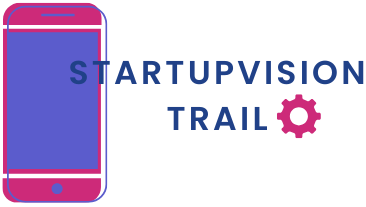Table of Contents
ToggleIn today’s fast-paced digital landscape, Software as a Service (SaaS) has emerged as a game-changer for businesses of all sizes. This innovative delivery model allows users to access software applications over the internet, eliminating the need for complex installations and maintenance. As organizations strive for efficiency and flexibility, SaaS provides a streamlined solution that adapts to their evolving needs.
By leveraging the power of the cloud, SaaS enables companies to scale their operations without hefty upfront costs. With a subscription-based approach, businesses can easily access cutting-edge tools and technologies, driving productivity and collaboration. As the demand for agile solutions grows, understanding the benefits and challenges of SaaS is crucial for any organization looking to thrive in the digital age.
Overview of Software As A Service
Software as a Service (SaaS) represents a cloud-based model where software applications are hosted on remote servers, simplifying access for users via the internet. Users interact with applications through various devices, eliminating the need for local installations.
Key Characteristics of SaaS
- Subscription-Based Pricing: SaaS typically operates on a subscription model, allowing organizations to pay for only what they use. This approach significantly reduces upfront costs and improves cash flow management.
- Automatic Updates: Software updates occur automatically, ensuring users always access the latest features and security patches without manual intervention. This characteristic enhances security and maintains application performance.
- Scalability: SaaS solutions accommodate a range of user needs, enabling organizations to scale their operations efficiently. Businesses can add or remove users and adjust service levels based on fluctuating demands.
- Accessibility: Users can access applications from anywhere with an internet connection. This flexibility supports remote work and collaboration among geographically dispersed teams.
- Integration Capabilities: SaaS applications often include APIs or integrations with other software. Organizations can streamline workflows and data management by connecting multiple applications.
Benefits of SaaS
- Cost-Effectiveness: The subscription model reduces capital expenditure associated with traditional software purchases. Organizations can allocate resources towards growth and innovation.
- Quick Deployment: SaaS applications typically allow for fast implementation and onboarding, minimizing downtime and accelerating productivity.
- Focus on Core Activities: By leveraging SaaS providers for software management, organizations can focus on core competencies while leaving maintenance and support in the hands of experts.
- Enhanced Collaboration: SaaS applications promote teamwork through real-time collaboration features. Teams can work together seamlessly, improving communication and project management.
Challenges of SaaS
- Data Security Concerns: Storing data off-site raises potential security risks. Organizations must evaluate the security measures of SaaS vendors to ensure compliance and protection.
- Vendor Dependence: Relying on third-party providers may result in limited control over software and data. Organizations should consider vendor stability and support options before committing.
- Internet Dependency: SaaS applications require a stable internet connection. Organizations in areas with unreliable connectivity may face disruptions in accessing services.
- Customization Limitations: SaaS solutions may lack the extensive customization capabilities found in traditional software. Organizations might need to adapt processes to fit application functionalities.
SaaS continues to redefine how businesses approach software deployment and management, emphasizing flexibility, efficiency, and cost savings in an increasingly digital world.
Benefits of Software As A Service

Software as a Service (SaaS) delivers a range of advantages that contribute to its growing popularity among businesses. Key benefits include cost efficiency, scalability, and accessibility.
Cost Efficiency
Cost efficiency ranks high among the benefits of SaaS. Subscription-based pricing lowers initial software expenditures, allowing businesses to allocate funds to other areas. With SaaS, companies avoid hefty upfront costs associated with traditional software installations. Additionally, ongoing maintenance and upgrade costs decrease, as the service provider manages these aspects. The predictable monthly or annual fees help organizations forecast budgets, thus enhancing financial planning.
Scalability
Scalability is another significant benefit of the SaaS model. Organizations can easily adjust their software usage according to changing business needs. As operations grow, companies can add or remove users without the hassle of on-premises hardware upgrades. For example, a business requiring additional licenses or features can expand its service with minimal downtime. This flexibility supports rapid growth, enabling companies to respond quickly to market demands.
Accessibility
Accessibility stands out as a core advantage of SaaS applications. Users can access software from any location with internet connectivity, facilitating remote work and collaboration. Multidevice compatibility allows teams to work across various platforms, enhancing productivity. For instance, employees can access essential tools and data from smartphones, tablets, or laptops. This level of accessibility ensures that businesses maintain operational efficiency regardless of location or device.
Challenges of Software As A Service
SaaS presents several challenges that organizations must navigate to maximize its potential. Notable issues include security concerns and downtime risks that can significantly impact business operations.
Security Concerns
Security concerns pose significant challenges for SaaS businesses. Sensitive data stored on cloud servers attracts cyber threats, as hackers target vulnerabilities within the SaaS applications. According to a 2022 report by Cybersecurity Ventures, ransomware attacks increased by 105% annually, indicating the increasing risk for SaaS users. Compliance with regulations such as GDPR and HIPAA complicates data management further, as organizations must implement robust security measures to protect customer information. Ensuring data encryption, secure authentication methods, and regular security audits forms a vital part of safeguarding SaaS applications against breaches.
Downtime Risks
Downtime risks remain a critical consideration for SaaS users. Although cloud service providers aim for high availability, outages can still occur due to technical issues, natural disasters, or cyberattacks. Research by Uptime Institute reported that 60% of organizations experienced at least one significant outage in 2021. Such interruptions can disrupt business operations, lead to data loss, and affect customer trust. Organizations must assess their provider’s service level agreements (SLAs) to understand uptime guarantees and establish contingency plans, including data backups and alternative access methods, to mitigate potential downtime impacts.
Popular Software As A Service Solutions
Various Software as a Service (SaaS) solutions cater to specific business needs. These applications are designed to enhance productivity, improve customer engagement, and streamline financial management.
Customer Relationship Management (CRM) Tools
Numerous CRM tools exist within the SaaS landscape, such as Salesforce, HubSpot, and Zoho CRM. These tools help organizations manage customer relationships effectively. Salesforce offers a robust platform focusing on sales automation, analytics, and customer service. HubSpot provides integrated marketing and CRM functionalities, allowing businesses to track and nurture leads. Zoho CRM supports customization and integration with various applications, making it a flexible option for diverse industries.
Collaboration Tools
Collaboration tools, including Slack, Microsoft Teams, and Asana, represent another category of SaaS solutions. Slack facilitates real-time communication and team collaboration through channels, direct messaging, and integration with other apps. Microsoft Teams combines chat, video conferencing, and file sharing, enhancing organizational productivity. Asana focuses on project management, helping teams track tasks, deadlines, and project progress seamlessly.
Accounting Software
Accounting software solutions, such as QuickBooks Online, Xero, and FreshBooks, offer essential financial management capabilities. QuickBooks Online automates invoicing, expense tracking, and financial reporting. Xero supports real-time financial data access, making it suitable for small to medium-sized businesses. FreshBooks targets freelancers and small business owners with user-friendly interfaces for invoicing, time tracking, and expense management.
These SaaS solutions demonstrate the versatility and efficiency that cloud-based applications bring to modern businesses, addressing key operational needs while promoting collaboration and growth.
Future Trends in Software As A Service
Future trends in Software as a Service (SaaS) are shaping the landscape of digital business. Several key developments are emerging, influencing how organizations utilize SaaS solutions.
- Artificial Intelligence Integration: AI capabilities are incorporating into SaaS platforms, enhancing automation and analytics. Tools that leverage AI can provide insights, streamline processes, and improve user experiences.
- Increased Focus on Security: Security concerns drive innovations in SaaS solutions. Providers are implementing advanced security measures such as multi-factor authentication and enhanced encryption methods, addressing data protection and compliance challenges.
- Hyper-Personalization: Hyper-personalized experiences are becoming standard in SaaS applications. Solutions that customize user interfaces and functionalities based on individual preferences and behaviors boost user engagement and satisfaction.
- Low-Code/No-Code Development: Low-code and no-code platforms are democratizing software development. These SaaS solutions enable non-technical users to create applications, reducing development bottlenecks and accelerating innovation.
- Multi-Cloud Strategies: Adopting multi-cloud strategies allows organizations to distribute services across multiple cloud environments. This approach enhances flexibility, mitigates vendor lock-in, and optimizes performance and costs.
- Subscription Flexibility: Subscription models are evolving with options for usage-based billing. This flexibility allows organizations to pay only for the services they need, making SaaS solutions more accessible and economically efficient.
- Collaboration Tools Expansion: Demand for collaboration tools continues to grow, leading to the expansion of SaaS offerings in this space. New features that support remote work, such as real-time editing and integrated communication, enhance teamwork across distances.
- Environmental Sustainability: Sustainable practices are gaining traction in the SaaS industry. Providers are adopting energy-efficient data centers and promoting responsible usage to reduce their carbon footprint.
These future trends in SaaS are paving the way for innovative solutions that resonate with modern business needs. As technology advances, organizations that embrace these trends are likely to enhance operational efficiency and maintain a competitive edge.
Software as a Service is reshaping the way businesses operate by offering flexibility and efficiency. Its subscription-based model allows companies to minimize upfront costs while adapting to changing needs. The accessibility of SaaS applications empowers teams to collaborate seamlessly from any location.
While challenges like data security and vendor dependence exist, the benefits often outweigh these concerns. Organizations that leverage SaaS can enhance productivity and streamline operations. As the industry evolves with trends like AI integration and low-code platforms, businesses must stay informed to harness the full potential of SaaS. Embracing these solutions will be crucial for maintaining a competitive edge in the digital landscape.





